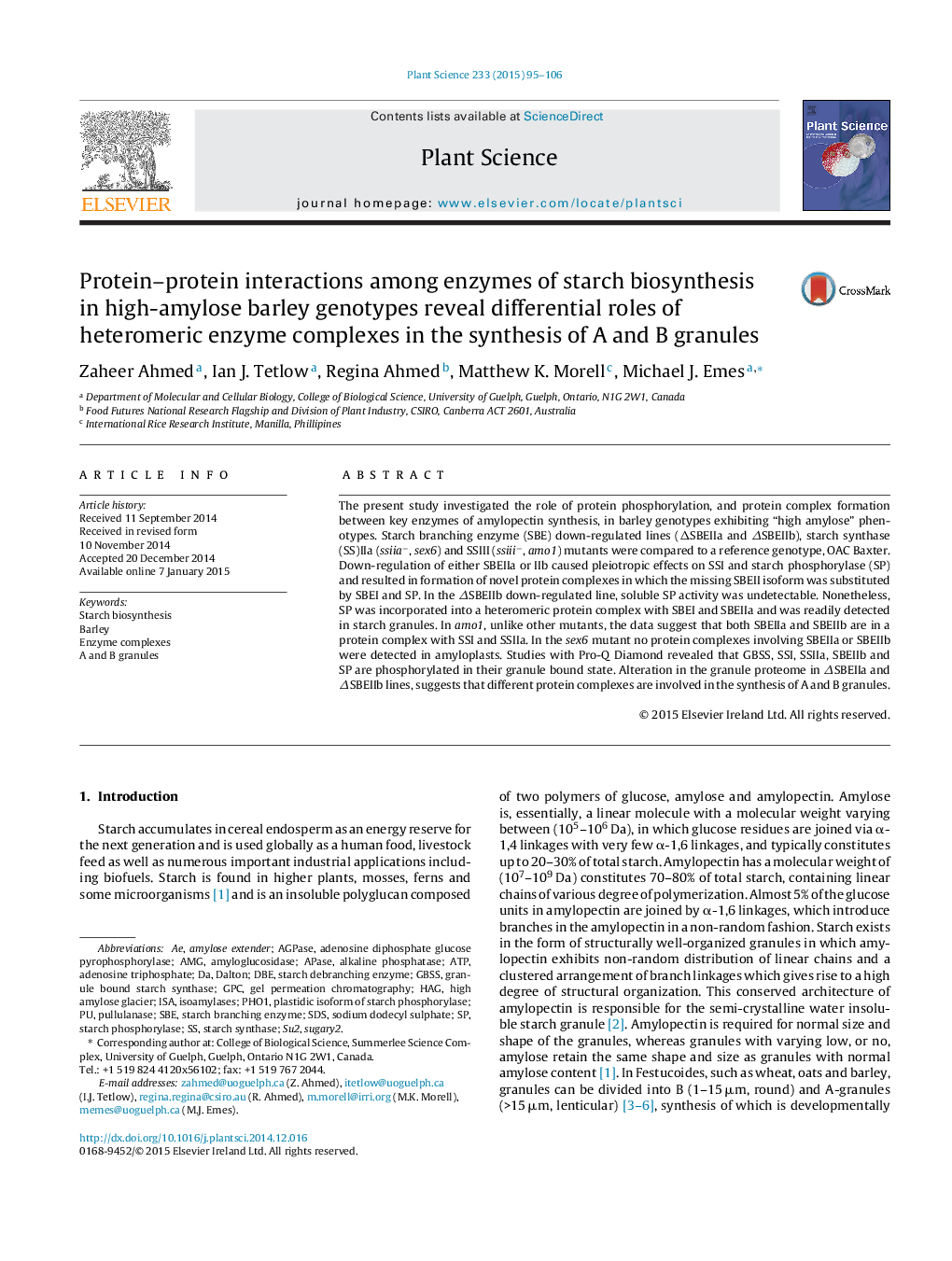| Article ID | Journal | Published Year | Pages | File Type |
|---|---|---|---|---|
| 8357858 | Plant Science | 2015 | 12 Pages |
Abstract
The present study investigated the role of protein phosphorylation, and protein complex formation between key enzymes of amylopectin synthesis, in barley genotypes exhibiting “high amylose” phenotypes. Starch branching enzyme (SBE) down-regulated lines (ÎSBEIIa and ÎSBEIIb), starch synthase (SS)IIa (ssiiaâ, sex6) and SSIII (ssiiiâ, amo1) mutants were compared to a reference genotype, OAC Baxter. Down-regulation of either SBEIIa or IIb caused pleiotropic effects on SSI and starch phosphorylase (SP) and resulted in formation of novel protein complexes in which the missing SBEII isoform was substituted by SBEI and SP. In the ÎSBEIIb down-regulated line, soluble SP activity was undetectable. Nonetheless, SP was incorporated into a heteromeric protein complex with SBEI and SBEIIa and was readily detected in starch granules. In amo1, unlike other mutants, the data suggest that both SBEIIa and SBEIIb are in a protein complex with SSI and SSIIa. In the sex6 mutant no protein complexes involving SBEIIa or SBEIIb were detected in amyloplasts. Studies with Pro-Q Diamond revealed that GBSS, SSI, SSIIa, SBEIIb and SP are phosphorylated in their granule bound state. Alteration in the granule proteome in ÎSBEIIa and ÎSBEIIb lines, suggests that different protein complexes are involved in the synthesis of A and B granules.
Keywords
su2DBESDSAMGHAGamylose extenderPho1APaseGPCGBSSAGPaseSBEAdenosine TriphosphateATPAlkaline phosphataseAmyloglucosidasestarch debranching enzymestarch branching enzymeStarch biosynthesisBarleydaltonsodium dodecyl sulphateEnzyme complexesstarch synthaseStarch phosphorylaseISAPullulanaseGel permeation chromatographygranule bound starch synthase
Related Topics
Life Sciences
Agricultural and Biological Sciences
Plant Science
Authors
Zaheer Ahmed, Ian J. Tetlow, Regina Ahmed, Matthew K. Morell, Michael J. Emes,
